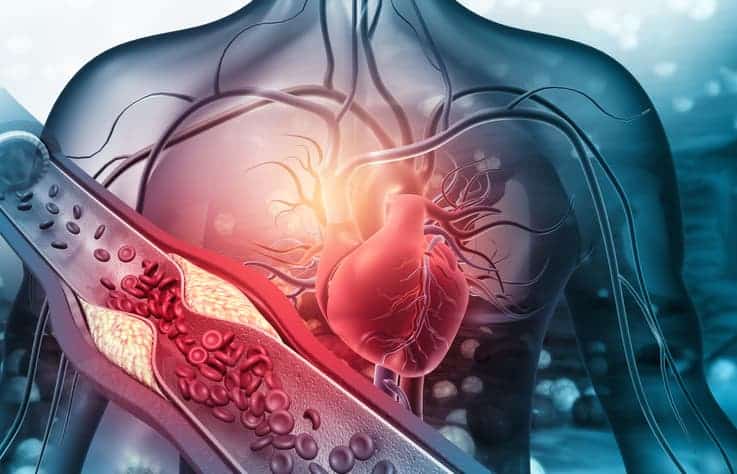
Likely, you’ve heard the word “cholesterol” mentioned throughout your daily life at least once or twice, either in passing at the water cooler or on a random late-night sitcom. Although you likely hear the word from time to time, do you understand what it is and why it’s important to human health? Were you aware that, according to the Centers for Disease Control and Prevention (CDC), almost 94 million people (aged 20 and older) in the United States have cholesterol numbers that are already bordering on “high” (as in higher than 200 mg/dL)? These cholesterol numbers could already be putting people at risk for serious health complications in the future if left unchecked.
While the National Cholesterol Education Program (NCEP) has been around since the mid-1980s, the National Cholesterol Education Month has only been around since 2021, according to the CDC. Considering there’s now a whole month dedicated to getting the word out, it seems likely that you’re not the only one who is a little confused about why cholesterol is a big deal.
Cholesterol is such a significant issue that the CDC even offers a “cholesterol kit” with information and easily accessible social media tools. These tools allow you to learn and share information on social media to stress cholesterol’s role in overall health. To celebrate National Cholesterol Education Month, keep reading to discover what cholesterol is and the dangers of high cholesterol.
What is Cholesterol?
According to The American Heart Association, cholesterol is a “waxy” entity in your blood. The human body requires cholesterol to create cells, hormones, and vitamins. While not all cholesterol is bad, it’s essential to know where “bad” cholesterol comes from.
The liver produces the cholesterol that the human body needs. The rest comes from the food we consume (primarily animal products such as dairy and meat). There are two kinds of cholesterol — HDL cholesterol (also known as “good cholesterol”) and LDL cholesterol (also known as “bad cholesterol”).
What causes high cholesterol?

If the body intakes too much LDL cholesterol and/or not enough HDL cholesterol, then cholesterol can begin to stick to the walls of your blood vessels. You are considered to have “high cholesterol” when your LDL cholesterol number is too high and/or your HDL cholesterol is too low, making it more likely cholesterol will begin to build up in your blood vessels.
According to The National Heart and Lung Institute, the most common cause of high cholesterol is unhealthy lifestyle choices. However, uncontrollable factors such as genetics, age, sex, race, certain medical conditions, and certain medications can also have an effect on your cholesterol levels.
Unhealthy lifestyle choices that increase your risk of high cholesterol include:
- Smoking
- A sedentary lifestyle
- Eating foods high in saturated fats
- Stress
- Drinking too much alcohol
Medical conditions that increase your risk of high cholesterol:
- Being overweight or obese
- Diabetes
- HIV infections
- Kidney diseases
- Sleep apnea
- Lupus
- Polycystic Ovary Syndrome (PCOS)
What are the dangers of high cholesterol?

If your blood contains too much LDL cholesterol and/or not enough HDL cholesterol, then over time, the cholesterol will build up in your blood vessels and arteries, increasing the risk of blocking proper blood flow. Considering that your organs need adequate blood flow to oxygenate and keep your body functioning, this can quickly become serious (or even deadly). According to the CDC, the most significant risk of high cholesterol is heart disease, heart attack, and stroke caused by these blockages. Heart disease is currently the leading cause of death in the United States.
When considering the danger of high cholesterol, you may be interested to know that there are almost no warning signs that your cholesterol is high. The CDC reports that some people may not realize they even have high cholesterol until they experience angina (chest pain caused by blockages), a heart attack, or a stroke. This is why it is so vital to take preventative measures to ensure that your cholesterol levels are within a healthy range.
How to lower cholesterol
Because high cholesterol can cause serious health problems, the CDC emphasizes that you should get your cholesterol levels checked regularly (at least every five years). Outside of the doctor’s office, you can also make heart-healthy choices to reduce your risk of high cholesterol by lowering your LDL numbers.
How to lower LDL cholesterol:
- Maintain a healthy weight.
- Get regular exercise.
- No smoking.
- Limit alcoholic beverages.
- Reduce your intake of unhealthy saturated fats and trans fats.
- Increase your intake of fiber and healthy fats (unsaturated fats).
- Talk to your doctor about whether cholesterol medication could benefit you.
Don’t let high cholesterol sneak up on you and cause serious health issues. By knowing your risk factors, regularly getting your blood tested, and following a heart-healthy diet, you can avoid the risks of high cholesterol. Seriously consider making an appointment with your primary care physician to have your cholesterol levels checked. This way, you and your doctor can go over the best plan of attack against high cholesterol for you.
Citations:
Blood Cholesterol Causes and Risk Factors. (2022).
Cholesterol. (2022).
Cholesterol Communications Kit. (2021).
Cholesterol Myths and Facts. (2021).
Heart Disease Facts. (2022).
High Cholesterol Facts. (2022).
What is Cholesterol? (2020).